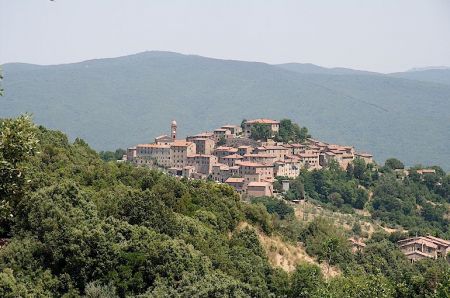Pari
Archaeological finds show that the hilltop location of the village of Pari has been inhabited since palaeolithic times, and was occupied by the both the Etruscans and the Romans. The Apri of today preserves a great deal of its original mediaeval appearance. It is located in the Alta Maremma and is a dependency of the municipality of Civitella Paganico.
The Counts of Ardengheschi chose Pari as their residence, then between 1179 and 1254 it fell under the control of Siena. At the end of the 13 C, the territory passed into the hands of other noble Sienese families such as the Rinuccini, the Squarcialupi, the Forteguerri, the Buonsignori and finally to the Malavolti. The various military and piractical incursions into the Ombrone valley, combined with outbreaks of malaria, resulted in a slow decline of the area, including Pari, but during the Leopoldine reforms of 1766 Pari returned to the "Provincia Inferiore" of Grosseto, and from that time on its destiny became linked to that Province.
Pari was also the spiritual home of the well-known writer Federigo Tozzi (1883-1920). His novels contain descriptions of Pari and the nearby hamlet of Ferraiola.
The Counts of Ardengheschi chose Pari as their residence, then between 1179 and 1254 it fell under the control of Siena. At the end of the 13 C, the territory passed into the hands of other noble Sienese families such as the Rinuccini, the Squarcialupi, the Forteguerri, the Buonsignori and finally to the Malavolti. The various military and piractical incursions into the Ombrone valley, combined with outbreaks of malaria, resulted in a slow decline of the area, including Pari, but during the Leopoldine reforms of 1766 Pari returned to the "Provincia Inferiore" of Grosseto, and from that time on its destiny became linked to that Province.
Pari was also the spiritual home of the well-known writer Federigo Tozzi (1883-1920). His novels contain descriptions of Pari and the nearby hamlet of Ferraiola.

